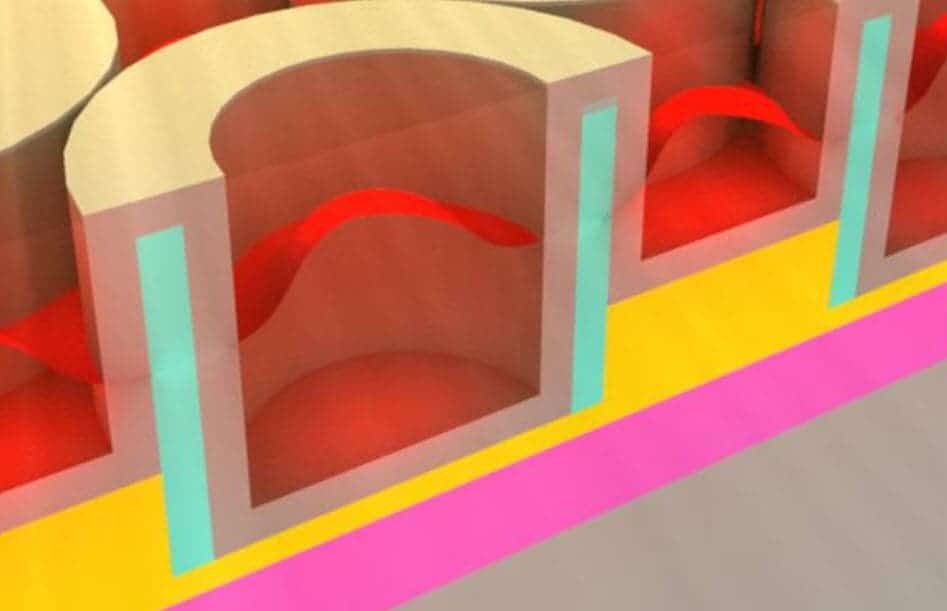Researchers at MIT report they’ve developed a novel material that can absorb almost all incoming wavelengths of light and convert the energy into heat. The radiated heat emitted by the material can then be collected by photovoltaics for later conversion into electricity. The material is cheap to make using currently available manufacturing processes, can absorb light indifferent of the incident angle and can withstand high temperatures making it ideal for solar collectors where powers up to thousands of suns are concentrated.
Releasing heat to generate electricity
The team engineered a metallic dielectric photonic crystal which was fabricated on a 6” silicon wafer. Tiny nanocavities strategically placed allow the researchers to fine tune the absorption spectrum of the material. As a demonstration, the material was tuned to absorb virtually all incoming wavelengths of light, besides the longer-wavelength infrared portion of the solar spectrum which actually decrease the final energy that is re-emitted by the crystals – this is the useful energy scientists eventually want to recover into electricity through solar-thermophotovoltaic (STPV) arrays.
“It’s a very specific window that you want to absorb in,” says MIT postdoc Jeffrey Chou. “We built this structure, and found that it had a very good absorption spectrum, just what we wanted.”
The material is also well matched to existing manufacturing technology, according to the researchers.
“This is the first-ever device of this kind that can be fabricated with a method based on current … techniques, which means it’s able to be manufactured on silicon wafer scales,” Chou says.

Measured absorption spectrum for the MIT photonic crystal with and without an anti-reflection coating (ARC) for 85% of photon energies from .7 electron-volts (1771 nm, or near-IR) to 5 electron-volts (248 nm, or ultraviolet) wavelengths. Yellow represents the solar spectrum received through the Earth’s atmosphere. (Credit: J. Chou et al./Advanced Materials)
To work as a solar energy converter, the array needs to withstand tremendous temperatures. Tests in the lab show it can endure a temperature of 1,000 degrees Celsius (1,832 degrees Fahrenheit) for a period of 24 hours without severe degradation. Another important strong point is that the material can absorb incoming light from any angle, which renders solar trackers useless in this respect. This greatly simplifies design and reduces cost.
“This is the first device that is able to do all these things at the same time,” Chou says. “It has all these ideal properties.”
Working devices demonstrated in the lab so far use ruthenium – a relatively expensive material. The MIT team is now looking for more cheaper alternatives, but according to them any kind of metal that can withstand high temperatures will do. Findings appeared in the journal Advanced Materials.










